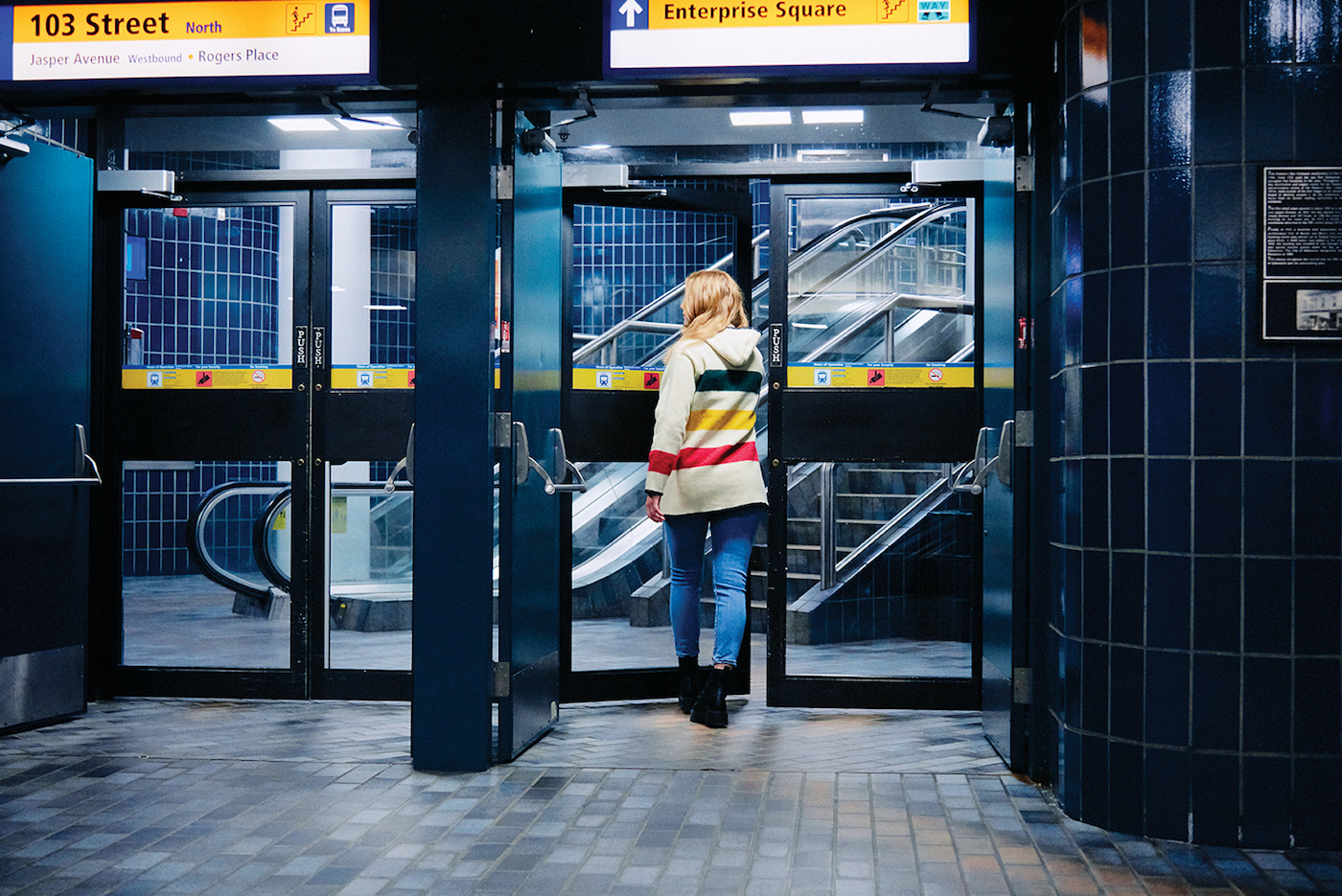
The Hudson’s Bay is slowly winding down the multi-floor downtown store that was once its Edmonton flagship. Edmonton City Councillor Scott McKeen isn’t worried about the recent departure of two department stores — one luxury and one large — from his downtown riding. The 35,000-square-foot Holt Renfrew in Manulife Place closed in January and then, in May, Hudson’s Bay announced it would close its 168,000-square-foot store just across the road, in the Edmonton City Centre mall.
“A lot of people take the wrong message from these things,” McKeen says. “The Bay was a mediocre retailer downtown and suffered the fate of mediocre retailers in a competitive environment.” To establish his bona fides, McKeen maintains that he’s fond of the Bay and shopped there a lot, despite the frustration he shared with many. “If you bought something on the second level you had to go down to the first level to pay for it,” he says. “You couldn’t find people.”
That was certainly true at the time of the writing, in July. Shelves and racks were mostly bare and empty pallets were stacked behind yellow caution tape as the store limped to a fall finish line. To be fair, much of Edmonton City Centre seems abandoned, with as many darkened storefronts and “for lease” signs as operating businesses. Outside, the interminable construction that has de ned Edmonton’s downtown for years continues.
The entirety of 102nd Avenue, running along the mall’s south side, is ripped up for the installation of the Valley Line LRT.
It’s hard to know how many of the Bay’s troubles are the result of its own ineptitude, how many because of COVID-19 and how many because of competition from e-commerce, big box stores and “power centres.” But the location’s problems go back even further than any of those phenomena, says Craig Patterson, director of applied research at the University of Alberta’s School of Retailing and the editor-in-chief at retailinsider.com. He says Edmonton’s first family of malls, the Ghermezians, built what was then the Eaton Centre — now the western, more forbidding half of City Centre Mall — in the late 1980s with the help of tax breaks from City Hall.

“It was a misguided effort to try and revive downtown by recreating these suburban bunkers that really didn’t engage with the street and indeed sucked the vibrancy off it,” Patterson says. “Humans, by their nature, like visual diversity and are more likely to turn and face those things. Going by a brick wall, they walk faster and don’t look at it.”
McKeen couldn’t agree more with Patterson’s street-level view, adding that the pedway system, designed to shield people from the elements in this winter city, also drains downtown of energy. “I love the public sidewalk and public squares,” he says. “They open up different experiences and are more interesting and you have every right to be there, whereas you’re a guest when you go to a mall.”
The situation with Holt Renfrew was different. It was the epicentre of luxury shopping in Edmonton, featuring brands like Louis Vuitton, Gucci and Burberry. Its business model was built largely on having those brands rent space and run their own boutiques. The Edmonton location had a couple of things going against it: It was small by Holt’s standards, especially since the store adopted a business model for large- format store expansion in other cities across Canada a few years ago, and the brands were starting to head — where else? — to the outer ring, particularly West Edmonton Mall. Patterson estimates that Louis Vuitton, in particular, brought in more than 50 per cent of Holt’s revenue in the Edmonton location. When it decamped for WEM last June, it sounded the death knell for Holt’s downtown Edmonton store.
Despite the woes of these two retailers, there’s a lot to be optimistic about in Edmonton’s downtown. Its population of residents is growing, the Ice District continues to develop into a legitimate entertainment district and the Valley Line LRT to Mill Woods will come online next year, easing up on the construction and making downtown that much more accessible. The western leg of the line is in the procurement phase and is expected in five or six years. And a change of ownership may also be a welcome harbinger. Chicago- based Lasalle Canada Property Fund (LCPF) bought Edmonton City Centre and the three office towers that rise above it — TD Tower, Oxford Tower and Centre Point Place — from Oxford Properties last November for more than $300 million. The LCPF did not return requests for comment, but in an interview CEO John McKinlay gave to Real Estate News EXchange at the time of the purchase, he said the mall provided strong tenant depth, long-term liquidity and a diversified income stream. And it’s already been through the wringer. “Given what’s transpired in the global economy, and particularly in Alberta over the last 10 years, we very much consider this asset stress-tested more than most,” he said.

Patterson says the real prizes were the three towers, which are almost full and are all in the eastern half of the complex. He wouldn’t be surprised to see the new owners tear down the low-density western half, the one that houses the old Bay, and make a street-facing, pedestrian- friendly, engaging stretch of downtown.
McKeen hopes so, and says these gradual changes will contribute to a retail renaissance downtown that looks less like a suburban mall and more like the popular, dynamic Whyte Avenue on the other side of the North Saskatchewan River. “It has to do with the experience,” he says. “People are willing to put a parka and tuque on if there’s an experience they want or shops they want to poke around in.”
This article appears in the October 2020 issue of Edify



